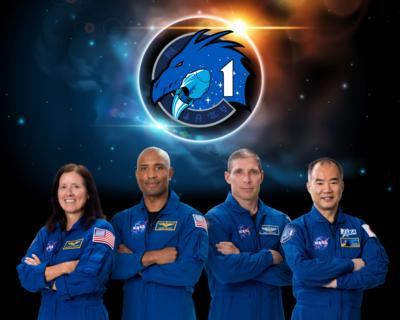Will Evaluate Recent Off-Nominal Behavior Of Falcon 9 First Stage Engine Gas Generators
Launch of NASA’s SpaceX Crew-1 mission to the International Space Station is now targeted for no sooner than early-to-mid November, providing additional time for SpaceX to complete hardware testing and data reviews as the company evaluates off-nominal behavior of Falcon 9 first stage engine gas generators observed during a recent non-NASA mission launch attempt.

Through the agency’s Commercial Crew and Launch Services Programs partnership with SpaceX, NASA has full insight into the company’s launch and testing data.
“We have a strong working relationship with our SpaceX partner,” said Kathy Lueders, associate administrator of NASA’s Human Exploration and Operations Mission Directorate. “With the high cadence of missions SpaceX performs, it really gives us incredible insight into this commercial system and helps us make informed decisions about the status of our missions. The teams are actively working this finding on the engines, and we should be a lot smarter within the coming week.”
Additional upcoming NASA missions rely on the Falcon 9 for launch. The Sentinel-6 Michael Freilich launch still is targeted for Tuesday, Nov. 10, from Vandenberg Air Force Base in California, and NASA’s SpaceX CRS-21, is targeted for launch in late November or early December, from Cape Canaveral Air Force Station in Florida. NASA and SpaceX will use the data from the company’s hardware testing and reviews to ensure these critical missions are carried out with the highest level of safety.
NASA’s SpaceX Crew-1 mission will launch NASA astronauts Michael Hopkins, Victor Glover, and Shannon Walker, along with Japan Aerospace Exploration Agency (JAXA) mission specialist Soichi Noguchi, from Launch Complex 39A at NASA’s Kennedy Space Center in Florida. The Crew Dragon spacecraft, named Resilience by the Crew-1 astronauts, was secured to its unpressurized trunk on Friday, Oct. 2, at the company’s processing facility on Cape Canaveral.
After launch, Crew Dragon will perform a series of maneuvers culminating with rendezvous and docking with the International Space Station. That milestone will mark the Crew-1 astronauts’ integration with the Expedition 64 astronauts Kate Rubins, as well as Expedition 64 commander Sergey Ryzhikov and flight engineer Sergey Kud-Sverchkov, both of the Russian space agency Roscosmos.
During their stay on the orbiting laboratory, astronauts of Crew-1 will see a range of unpiloted spacecraft including the Northrop Grumman Cygnus, the next generation of SpaceX cargo Dragon spacecraft, and the Boeing CST-100 Starliner on its uncrewed flight test to the station. They also will conduct a variety of spacewalks and welcome crews of the Russian Soyuz vehicle and the next SpaceX Crew Dragon in 2021.

At the conclusion of the mission, Crew Dragon will autonomously undock with the four astronauts on board, depart the space station and re-enter the Earth’s atmosphere. After splashdown just off Florida’s coast, the crew will be picked up at sea by a SpaceX recovery vessel and will be brought to shore to board a plane for return to the Johnson Space Center in Houston.
The Crew-1 mission is a major step for NASA’s Commercial Crew Program. Operational, long duration commercial crew rotation missions will enable NASA to continue the important research and technology investigations taking place onboard the station. Such research benefits people on Earth and lays the groundwork for future exploration of the Moon and Mars starting with the agency’s Artemis program, which will land the first woman and the next man on the lunar surface in 2024.
 Airborne 05.10.24: Icon Auction, Drunk MedEvac Pilot, Bell ALFA
Airborne 05.10.24: Icon Auction, Drunk MedEvac Pilot, Bell ALFA ANN's Daily Aero-Term (05.13.24): ILS PRM Approach
ANN's Daily Aero-Term (05.13.24): ILS PRM Approach ANN's Daily Aero-Linx (05.13.24)
ANN's Daily Aero-Linx (05.13.24) Airborne-NextGen 05.07.24: AI-Piloted F-16, AgEagle, 1st 2 WorldView Sats
Airborne-NextGen 05.07.24: AI-Piloted F-16, AgEagle, 1st 2 WorldView Sats Airborne 05.08.24: Denali Update, Dad-Daughter Gyro, Lake SAIB
Airborne 05.08.24: Denali Update, Dad-Daughter Gyro, Lake SAIB




